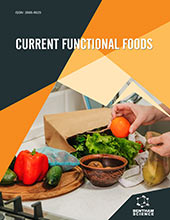
Full text loading...
We use cookies to track usage and preferences.I Understand
Probiotic foods are functional foods that play important roles in the health of humans and animals. Over centuries, the main route for probiotics transfer into humans and animals is through fermented dairy products. However, currently, the selection of new probiotic strains and the development of new administration carriers due to consumer preference and conditions are on the rise, especially with the emergence of vegetarians. However, a number of uncertainties concerning the type of probiotic strain and the carrier exist. Therefore, this review seeks to elaborate on some plant-based probiotic carriers and discuss their shortfalls, as well as report on some recent methods being used to protect probiotics in foods to serve as a basis for researchers and probiotic producing industries to correctly select the best strains for a particular carrier and modify existing plant-based probiotic carriers to promote survivability of probiotics in order to meet the high demands for plant-based probiotic products, especially by vegetarians. This review reports that transferring health benefits and maintaining bacterial cell viability for longer storage have been a major shortfall in the plant-based probiotic products industry due to challenges, such as easy loss of cell viability and sensory attributes as a result of fermentation activities by probiotic bacteria. Hence, for reducing these problems, the review suggeststhat the adoption of techniques, such as selection of resistant probiotic bacteria, prebiotics, encapsulation, and use of appropriate packaging and storage conditions, would improve probiotic bacteria cell viability and maintain the sensory attributes in plant-based probiotic products, thus increasing consumer acceptance.

Article metrics loading...

Full text loading...
References


Data & Media loading...

